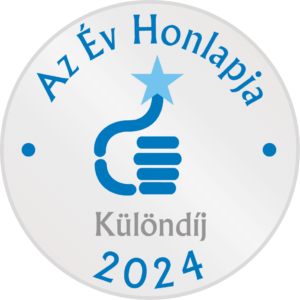Az állatsimogatóban lakó törpekecskéknél és kameruni juhoknál is gyermekáldás volt az elmúlt hetekben, így most több mint egy tucat kisállat cseperedik ebben a kifutóban, ahová természetesen látogatóink is bemehetnek.

Egy hete már hírt adtunk a gyimesi racka bárányokról, de az állatsimogatóban lakó törpekecskéknél és kameruni juhoknál is volt gyermekáldás, így ott is sok aranyos kisbáránnyal és kecskegidával találkozhatnak azok, akik mostanában ellátogatnak hozzánk.
Az állatsimogató Állatkertünk egyik igen népszerű bemutatóhelye, ahol a gyerekek, családok bemehetnek a szelíd, barátságos háziállatok közé, és meg is simogathatják őket. Az első állatsimogatót az 1980-as évek végén hoztuk létre, azon a területen, ahol ma Agnes, a tigris lakik. 1996-ra aztán a már akkor is közkedvelt bemutatóhelyet a Pálmaház közelébe költöztettük át, oda, ahol napjainkban az Ausztrál ösvény működik. A 2014-től négy éven át többször volt az Állatsimogató ideiglenes helyszínen, mai helyén pedig 2018 óta várja a látogatókat.
Az állatsimogató működésének fontos alapelve, hogy az ne csak az állatokat simogatni szerető látogatók számára legyen jó élmény, hanem az ott lakó állatoknak is. Ehhez pedig látogatóink együttműködésére is szükség van. Az állatsimogatót úgy alakítottuk ki, hogy legyen egy hátsó karámja is, ahová az állatok visszavonulhatnak, ha épp nincs kedvük a simogatáshoz. Ide tehát nem szabad átmászni. De mindig van így is simogatható jószág. Általában egyébként érdemes megvárni, míg ida jönnek hozzánk, hiszen kíváncsiak ránk. Ilyenkor lehet a leginkább megsimogatni őket.
Persze nemcsak az állatsimogatót érdemes felkeresni, hiszen sok más látnivalónk is van. A húsvéti hosszú hétvégén ráadásul egyéb programokat is kínálunk: naponta kilencféle állatos élményprogram (látványetetések, állatbemutatók, merüléses cápaetetés), tojáskereső játék és kézműveskedés is várja a gyermekeket, családokat. Emellett a margitszigeti kisállatkertben is lesznek programok.
Iratkozz fel hírlevelünkre és értesülj elsőként újdonságainkról, programjainkról és friss híreinkről!

